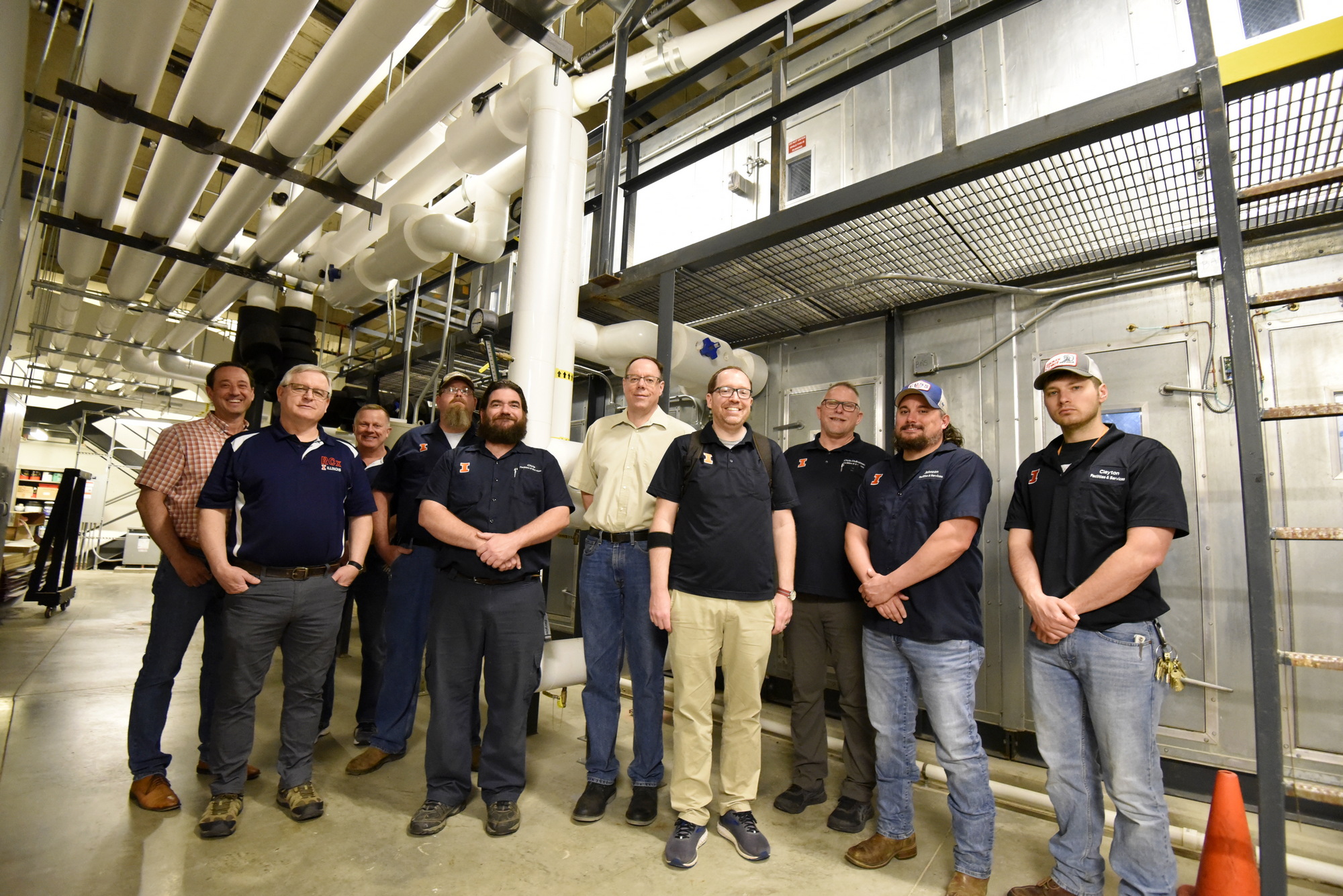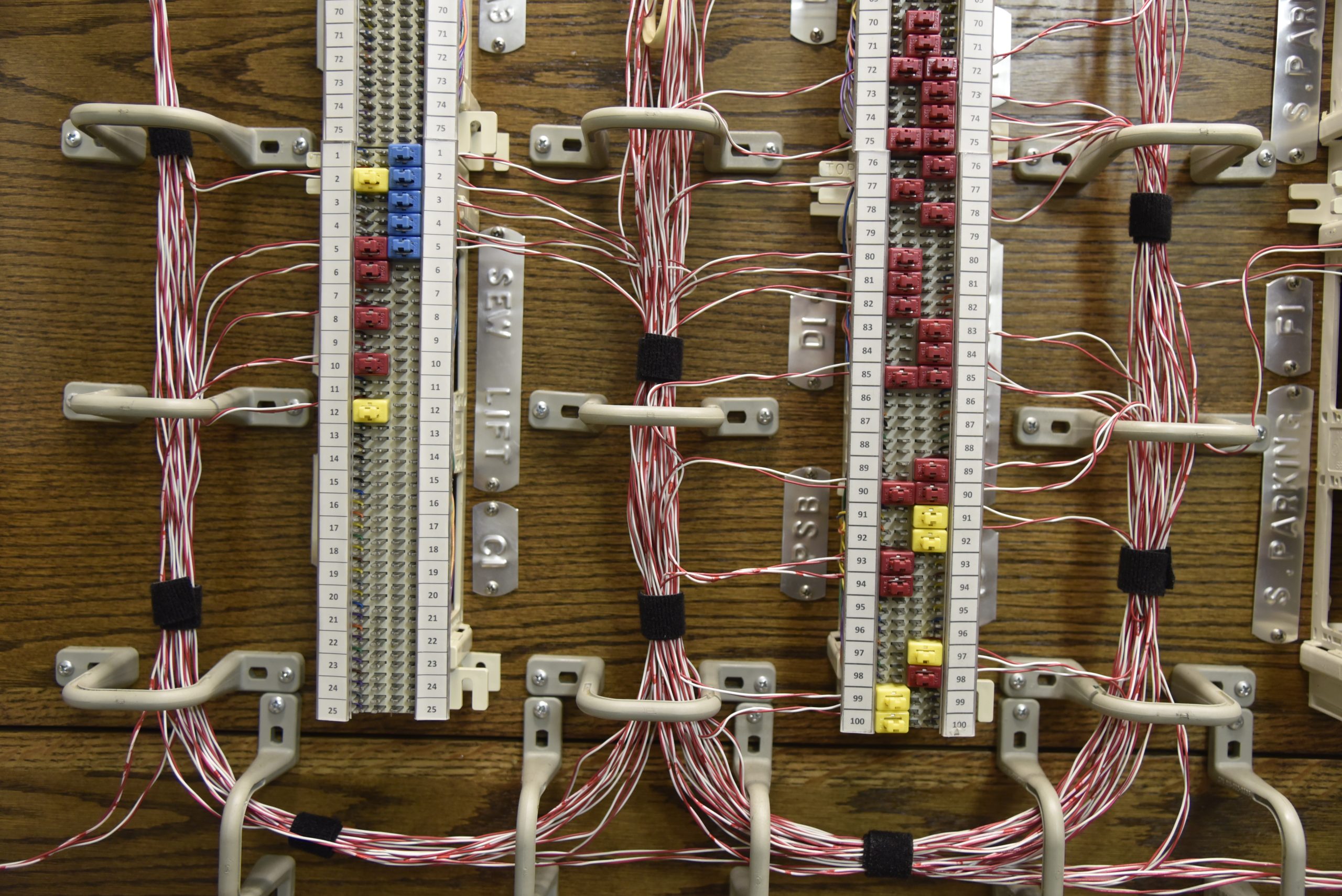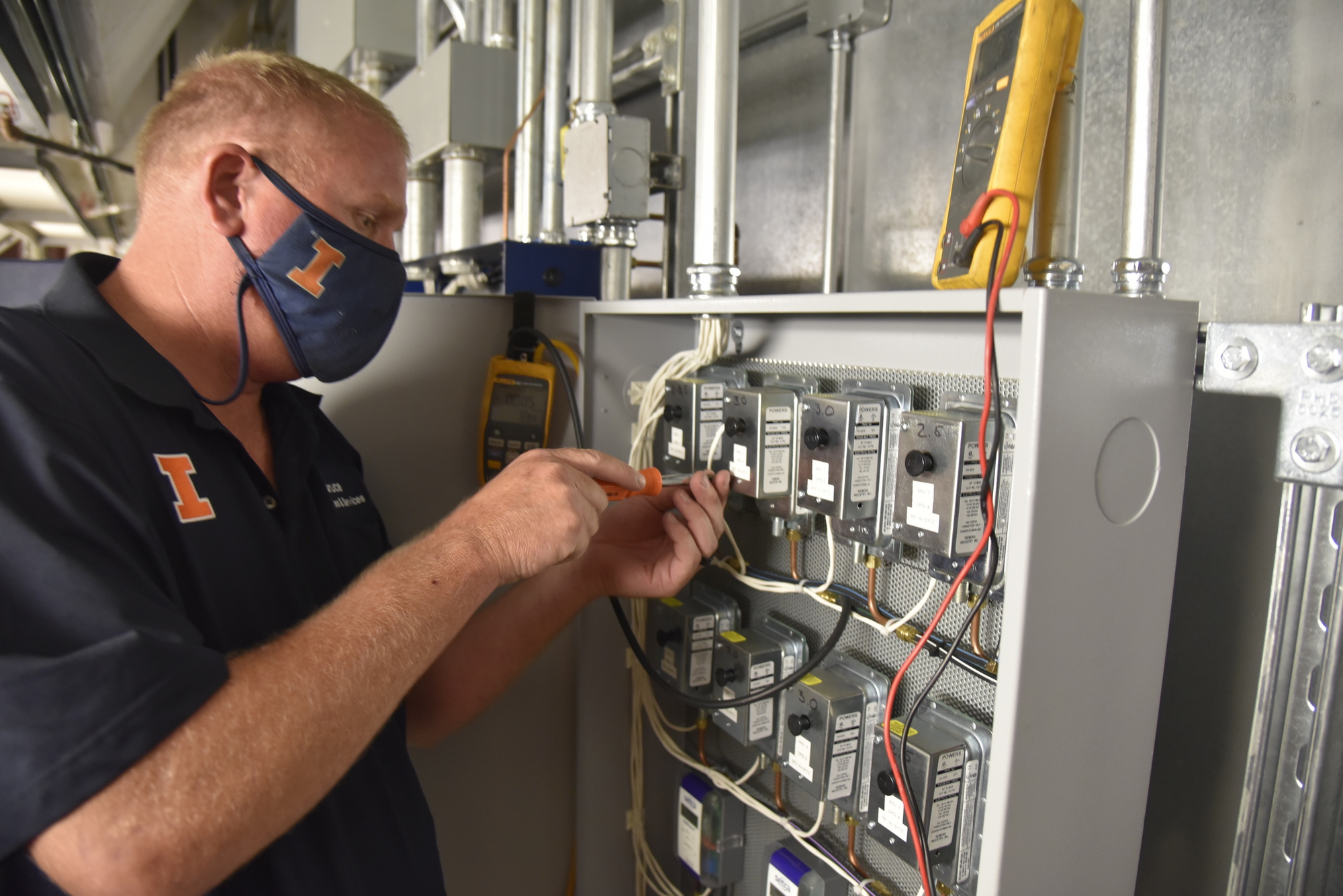Recommissioning
Saving energy doesn’t just reduce the campus’ carbon footprint; it frees up financial resources to address the campus’ backlog of building maintenance.
Ten years ago, teams of F&S heating, ventilation, and air conditioning (HVAC) specialists began updating and upgrading systems in more than 70 campus buildings. To date, these retrocommissioning teams have cut building energy use by an average of 27 percent and helped the campus avoid more than $56 million in utility costs—while making facilities more comfortable.
But the combination of aging buildings and underfunded maintenance can undo that progress. To ensure energy savings over the long term, F&S formed teams of similar specialists to revisit or “recommission” these buildings.
Currently, four teams of electricians, sheet metal workers, temperature control technicians, and direct digital control specialists recommission campus building systems. Eventually, there will be six teams visiting buildings every two to three years. These teams are part of an initiative to move from reactive to preventive maintenance.
According to Dave Hardin, who heads the teams as Associate Director of Utilities & Energy Services, “What makes these energy conservation gains possible are the people on the teams and their experience in finding creative solutions.”
By scheduling HVAC systems to run only when buildings are being used, replacing broken valves, and even finding new ways to operate the systems, the teams maintain the previous savings and often add to them. Last year, recommissioning teams helped the Coordinated Science Laboratory reduce its energy consumption by an additional 53 percent, Astronomy Building by 35 percent, Doris Kelley Christopher Hall by 30 percent, ACES Library by 29 percent, and Memorial Stadium by 17 percent.
Links
Documents


